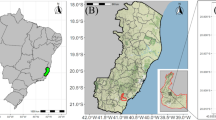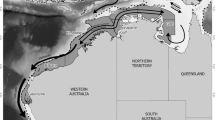Abstract
The genetic architectures of four morphometric traits in the housefly, Musca domestica L., were analysed using a paternal half-sib design on a large outbred base population and on two populations each established with two pairs of flies from the base population. By including parents with the offspring in the analysis, phenotypic variance was subdivided into components for additive, dominance, additive-by-additive epistasis and environmental variation. In relation to the nonbottlenecked base population, narrow sense hertitability was lower in the bottle-necked populations, largely because of an increase in the level of the environmental component of variance. Averaged over the four traits in the nonbottlenecked base population, nonadditive components contributed nearly 60 per cent of the phenotypic variance, with more than half of this being attributable to epistasis. Two of the four traits showed reduced additive genetic variance in the bottlenecked lines, whereas two of the traits showed increased additive genetic variance. A major difference in the genetic architecture between traits showing these two disparate bottleneck effects was the presence of epistasis in the nonbottlenecked base population for the traits which showed an increase in the additive component. Overall, there was a significant positive relationship between the initial percentage contribution of epistasis in the base population and the gain in the additive component in the bottleneck lines, as predicted by models incorporating additive-by-additive epistasis.
Similar content being viewed by others
Article PDF
References
Barker, J S F. 1979. Inter-locus interactions: a review of experimental evidence. Theor Pop Biol, 16, 323–346.
Barton, N H, and Turelli, M. 1989. Evolutionary quantitative genetics: how little do we know? Ann Rev Genet, 23, 337–370.
Becker, W A. 1988. Manual of Quantitative Genetics. Academic Enterprises, Pullman, WA.
Bryant, E H. 1977. Morphometric adaptation of the housefly, Musca domestica L., in the United States. Evolution, 31, 580–596.
Bryant, E H. 1986. On the use of logarithms to accommodate scale. Syst Zool, 35, 552–559.
Bryant, E H, and Meffert, L M. 1988. Effect of an experimental bottleneck on morphological integration in the housefly. Evolution, 42, 698–707.
Bryant, E H, and Meffert, L M. 1990. Multivariate phenotypic differentiation among bottleneck lines of the housefly. Evolution, 44, 660–668.
Bryant, E H, and Meffert, L M. 1993. The effect of serial founder-flush cycles on quantitative genetic variation in the housefly. Heredity, 70, 122–129.
Bryant, E H, and Meffert, L M. 1995. Analysis of selectional response in relation to a population bottleneck. Evolution, 49, 626–634.
Bryant, E H, McCommas, S A, and Combs, L M. 1986. The effect of an experimental bottleneck upon quantitative genetic variation in the housefly. Genetics, 114, 1191–1211.
Charlesworth, D, and Charlesworth, B. 1987. Inbreeding depression and its evolutionary consequences. Ann Rev Ecol and Syst, 18, 237–268.
Cheverud, J M, and Routman, E J. 1995. Epistasis and its contribution to genetic variance components. Genetics, 139, 1455–1461.
Cockerham, C C. 1956. Estimation of genetic variances. Statistical genetics and plant breeding. National Academy of Science, U.S.A., Publication Number 982.
Cockerham, C C. 1986. Modifications in estimating the number of genes for a quantitative character. Genetics, 114, 659–664.
Cockerham, C C, and Tachida, H. 1988. Permanancy of response to selection for quantitative characters in finite populations. Proc Natl Acad Sci USA, 85, 1563–1565.
Cowley, D E, and Atchley, W R. 1988. Quantitative genetics of Drosophila melanogaster. II. Heritabilities and genetic correlations between sexes for head and thorax traits. Genetics, 119, 421–433.
Cowley, D E, Atchley, W R, and Rutledge, J J. 1986. Quantitative genetics of Drosophila melanogaster. I. Sexual dimorphism in genetic parameters for wing traits. Genetics, 114, 549–566.
Coyne, J A, and Beecham, E. 1987. Heritability of two morphological characters within and among natural populations of Drosophila melanogaster. Genetics, 117, 727–737.
Crow, J F, and Kimura, M. 1970. An Introduction to Population Genetics Theory. Harper and Row, New York.
Draper, N R, and Smith, N M. 1981. Applied Regression Analysis. John Wiley, New York.
Efron, B. 1982. The Jackknife, the Bootstrap and Other Resampling Plans. Society for Industrial and Applied Mathematics, Philadelphia, PA.
Efron, B, and Gong, G. 1983. A leisurely look the bootstrap, the jackknife, and cross-validation. Am Statist, 37, 36–48.
Falconer, D S. 1989. Introduction to Quantitative Genetics, 3rd edn. John Wiley, New York.
Gimelfarb, A. 1989. Genotypic variation for a quantitative character maintained under stabilizing selection without mutations: epistasis. Genetics, 123, 217–227.
Goodnight, C J. 1987. On the effect of founder events on epistatic genetic variance. Evolution, 41, 171–179.
Goodnight, C J. 1988. Epistasis and the effect of founder events on the additive genetic variance. Evolution, 42, 441–454.
Goodnight, C J. 1995. Epistasis and the increase in additive genetic variance: implications for Phase I of Wright's shifting balance process. Evolution, 49, 502–511.
Hard, J J, Bradshaw, W E, and Holzapfel, C M. 1992. Epistasis and the genetic divergence of photoperiodism between populations of the pitcher-plamt mosquito, Wyeomyia smithii. Genetics, 131, 389–396.
Hastings, A. 1989. Linkage disequilibrium and genetic variances under mutational-selection balance. Genetics, 121, 857–860.
Hedrick, P H, Jain, S, and Holden, L. 1978. Multilocus systems in evolution. Evol Biol, 11, 101–182.
Jones, L S, Frankham, R, and Barker, J S F. 1968. The effects of population size and selection intensity in selection for a quantitative character in Drosophila. II. Long-term response to selection. Genet Res, 12, 249–264.
Kearsey, M J, and Kojima, K. 1967. The genetic architecture of body weight and egg hatchability in Drosophila melanogaster. Genetics, 56, 23–37.
Keightly, P D. 1989. Models of quantitative variation in flux in metabolic pathways. Genetics, 121, 869–876.
Lander, E, and Botstein, D. 1989. Mapping Mendelian factors underlying quantitative traits using RFLP linkage maps. Genetics, 121, 185–199.
Lark, K G, Chaes, K, Adler, F, Mansur, L M, and Orf, J H. 1995. Interactions between quantitative trait loci in soybean in which trait variation at one locus is conditional upon a specific allele at another. Proc Natl Acad Sci USA, 92, 4656–4660.
Long, A D, Mullaney, S L, Reid, L A, Fry, J D, Langley, C H, and MacKay, T F C. 1995. High resolution mapping of genetic factors affecting abdominal bristle number in Drosophila melanogaster. Genetics, 139, 1273–1291.
Lush, J L. 1940. Intra-sire correlations or regressions of offspring on dam as a method of estimating heritability of characters. Proceedings of the American Society of Animal Production, 33, 293–301.
Mather, K, and Jinks, J L. 1982. Biometrical Genetics, 3rd edn. Chapman and Hall, New York.
Meffert, L M. 1995. Bottleneck effects on genetic variance for courtship repertoire. Genetics, 139, 365–374.
Miller, R H, Legates, J E, and Cockerham, C C. 1963. Estimation of nonadditive hereditary variance in traits of mice. Genetics, 48, 177–188.
Moreno, G. 1994. Genetic architecture, genetic behavior, and character evolution. Ann Rev Ecol Syst, 25, 31–44.
Nie, N H, Hull, C H, Jenkins, J G, Steinbrenner, K, and Bent, D H. 1975. SPSS: Statistical Package for the Social Sciences. McGraw-Hill, New York.
Paterson, A H, Damon, S, Hewitt, J D, Zamir, D, Rabinowitch, H D, Lincoln, S E, Lander, E S, and Tanksley, S D. 1991. Mendelian factors underlying quantitative traits in tomato: comparison across species, generations, and environments. Genetics, 127, 181–197.
Riska, B, Rutledge, J, and Atchley, W R. 1985. Genetic analysis of crossfostering data with sire and dam records. J Hered, 76, 247–250.
Robertson, A. 1952. The effect of inbreeding on the variation due to recessive genes. Genetics, 37, 189–207.
Robertson, A. 1955. Selection in animals: synthesis. Cold Spring Harb Symp Quant Biol, 20, 225–229.
Robertson, A. 1967. The nature of quantitative genetic variation. In: Brink, R. A. (ed.) Heritage from Mendel, pp. 265–280. University of Wisconsin Press, Madison, WI.
Robertson, F W. 1954. Studies in quantitative inheritance. V. Chromosome analysis of crosses between selected and unselected lines of different body size in Drosophila. J Genet, 52, 494–520.
Robertson, F W. 1955. Selectional response and the properties of genetic variation. Cold Spring Harb Symp Quant Biol, 20, 166–177.
Shaw, R G. 1987. Maximum-likelihood approaches to quantitative genetics of natural populations. Evolution, 41, 812–826.
Shrimpton, A E, and Robertson, A. 1988. The isolation of polygenic factors controlling bristle score in Drosophila melanogaster. I. Allocation of third chromosome bristle effects within chromosome sections. Genetics, 118, 437–443.
Tachida, H, and Cockerham, C C. 1989a. Effects of identity disequilibrium and linkage on quantitative variation in finite populations. Genet Res, 53, 63–70.
Tachida, H, and Cockerham, C C. 1989b. A building block model for quantitative genetics. Genetics, 121, 247–262.
Turelli, M, and Barton, N. 1990. Dynamics of polygenic characters under selection. Theor Pop Biol, 38, 1–57.
Webber, K E. 1990a. Increased selectional response in larger populations. I. Selection for wing-tip height in Drosophila melanogaster at three population sizes. Genetics, 125, 579–584.
Webber, K E. 1990b. Selection on wing allometry in Drosophila melanogaster. Genetics, 126, 975–989.
Willis, J H, and Orr, H A. 1993. Increased heritability variation following population bottlenecks: the role of dominance. Evolution, 47, 949–957.
Wright, S. 1931. Evolution in Mendelian populations. Genetics, 16, 97–159.
Wright, S. 1932. General, group, and special size factors. Genetics, 17, 603–619.
Wright, S. 1935. Evolution of populations in approximate equilibrium. J Genet, 30, 257–266.
Wright, S. 1940. Breeding structure of populations in relation to speciation. Am Nat, 74, 232–248.
Author information
Authors and Affiliations
Rights and permissions
About this article
Cite this article
Bryant, E., Meffert, L. Nonadditive genetic structuring of morphometric variation in relation to a population bottleneck. Heredity 77, 168–176 (1996). https://doi.org/10.1038/hdy.1996.121
Received:
Issue date:
DOI: https://doi.org/10.1038/hdy.1996.121
Keywords
This article is cited by
-
Effect of dietary lipid on biochemical activities and fitness of house fly, Musca domestica L. (Diptera: Muscidae)
International Journal of Tropical Insect Science (2020)
-
Maintenance of genetic variation in quantitative traits of a woodland rodent during generations of captive breeding
Conservation Genetics (2018)
-
Do bottlenecks increase additive genetic variance?
Conservation Genetics (2012)
-
Consequences of fragmentation for the ability to adapt to novel environments in experimental Drosophila metapopulations
Conservation Genetics (2010)
-
The effect of non-additive genetic interactions on selection in multi-locus genetic models
Heredity (2007)



